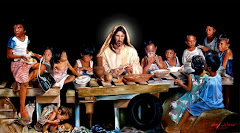Tuesday, September 14, 2010
Friday, June 4, 2010
Sunday, April 11, 2010
Thursday, March 12, 2009
software for the lesson plan
This is a software for the lesson plan that will be submitted this last week of March.
http://www.mathcats.com/explore/polygons.html
http://www.mathcats.com/explore/polygons.html
Thursday, February 5, 2009
WEBQUEST
What is WebQuest?
WebQuest, originally created by Bernie Dodge at San Diego State University in 1995, are "inquiry-oriented" activities self-contained on the web. WebQuest are "designed to support the learners' thinking at levels of analysis, synthesis, and evaluation" by using information provided rather than focusing on obtaining it themselves (Dodge, 2004).
The WebQuest model didn't fall out of the sky from the planet Krypton. It's just a particular packaging of concepts and techniques like cooperative learning, advance organizers, scaffolding, problem-based learning, and so on each of which has a huge literature base. So when it comes time to do a lit review in preparation for a WebQuest study, you construct it based on whatever aspects of WebQuest that you're interested in. (Dodge, 2004).
The Importance of WebQuest
WebQuest bring together the most effective instructional practices into one activity, including:
1. Student Motivation -- Students who participate in WebQuest are often more motivated because they are engaged in trying to understand or solve real-world problems, helping students assume ownership in their learning. Students become more motivated when they have opportunities to use authentic resources rather than outdated textbooks and library resources; have access to experts; can explore a range of current documents and reports; search a variety of databases and relevant material; and, have the opportunity to make choices and decisions in the learning process.
2. Authentic Learning -- WebQuest often pose authentic situations and provide opportunities for students to role play. Students' work together by role playing others in the community and sharing in their beliefs, opinions, and values in an effort to understand or solve a given problem. Students who are faced with understanding or solving an authentic task in school have their learning validated; rather than many of those students who work on isolated skills and facts and see learning as disjointed from the real world. An example of this might be to have students role play being scientists, environmentalists, land developers, city council members, and consumers to determine alternative solutions to the deforestation and effects on a community that is rapidly growing and expanding.
3. Developing Thinking Skills -- WebQuest are based on the strategies of cognitive psychology and constructivism and pose questions to students that cannot be simply answered through rote rehearsal and memorization. Students are required to dissect the task and attack sub-tasks sifting through information, thereby facilitating deeper and more advanced thinking that connects to prior knowledge. These new connections can be strengthened when the topic is encountered again in the future.
4. Cooperative Learning -- A WebQuest naturally creates cooperative learning opportunities. WebQuest creates opportunities for learning about complex subjects, making it impossible for every student to know about or master every aspect of the given situation.
5. Respecting Diversity -- The WebQuest provides a natural setting for promoting respect for diversity. Groups of students naturally vary in gender, race, ethnicity, socio-economic status, and religious beliefs. Working together students sift through complex information and encounter opinions from others as well as among their own group members in an effort to work together to facilitate a deeper and more advanced understanding about the topic. By sifting through complex information as well as diverse opinions, connections to their prior knowledge not only builds new connections that can be strengthened later but diverse opinions and new ways of understanding and knowing are brought to the forefront, and similarities and differences aid in understanding and solving the problem.
6. Alternative Assessment -- As students complete their WebQuest there may be many different answers to the same problem and rationales that accompany the different answers. Alternative assessment measures other than the traditional paper/pencil test are often more effective in understanding students' thought processes and conclusions. Alternative assessment measures may include students presenting their conclusions in a speech, debate, PowerPoint presentation, poster presentation, video tape, audio tape, or even a multimedia presentation.
WebQuest in the Philippine Education
WebQuest is very helpful, not only for students, but also for teachers, that they can develop their cognitive skill, at the same time develop one of their intelligences, which is the "Intrapersonal". This could help our education system and our current education curriculum attain more of its objectives and goals. But is WebQuest really applicable in the Philippine Education? Years ago, DepEd implemented "cybereducation" throughout the nation, but we can't deny the fact that 'til now, there are still schools, especially those that are located in rural areas, which have no enough technologies, like computers. Students of these schools are not exposed to these technologies, and will possibly become computer illiterate. Will these students become competent professionals in the future? On the other hand, if DepEd officials will consider this factor, and will find solutions, as early as possible, it will be really "realistic" that we can adapt WebQuest as an aid in educating the learners.
WebQuest, originally created by Bernie Dodge at San Diego State University in 1995, are "inquiry-oriented" activities self-contained on the web. WebQuest are "designed to support the learners' thinking at levels of analysis, synthesis, and evaluation" by using information provided rather than focusing on obtaining it themselves (Dodge, 2004).
The WebQuest model didn't fall out of the sky from the planet Krypton. It's just a particular packaging of concepts and techniques like cooperative learning, advance organizers, scaffolding, problem-based learning, and so on each of which has a huge literature base. So when it comes time to do a lit review in preparation for a WebQuest study, you construct it based on whatever aspects of WebQuest that you're interested in. (Dodge, 2004).
The Importance of WebQuest
WebQuest bring together the most effective instructional practices into one activity, including:
1. Student Motivation -- Students who participate in WebQuest are often more motivated because they are engaged in trying to understand or solve real-world problems, helping students assume ownership in their learning. Students become more motivated when they have opportunities to use authentic resources rather than outdated textbooks and library resources; have access to experts; can explore a range of current documents and reports; search a variety of databases and relevant material; and, have the opportunity to make choices and decisions in the learning process.
2. Authentic Learning -- WebQuest often pose authentic situations and provide opportunities for students to role play. Students' work together by role playing others in the community and sharing in their beliefs, opinions, and values in an effort to understand or solve a given problem. Students who are faced with understanding or solving an authentic task in school have their learning validated; rather than many of those students who work on isolated skills and facts and see learning as disjointed from the real world. An example of this might be to have students role play being scientists, environmentalists, land developers, city council members, and consumers to determine alternative solutions to the deforestation and effects on a community that is rapidly growing and expanding.
3. Developing Thinking Skills -- WebQuest are based on the strategies of cognitive psychology and constructivism and pose questions to students that cannot be simply answered through rote rehearsal and memorization. Students are required to dissect the task and attack sub-tasks sifting through information, thereby facilitating deeper and more advanced thinking that connects to prior knowledge. These new connections can be strengthened when the topic is encountered again in the future.
4. Cooperative Learning -- A WebQuest naturally creates cooperative learning opportunities. WebQuest creates opportunities for learning about complex subjects, making it impossible for every student to know about or master every aspect of the given situation.
5. Respecting Diversity -- The WebQuest provides a natural setting for promoting respect for diversity. Groups of students naturally vary in gender, race, ethnicity, socio-economic status, and religious beliefs. Working together students sift through complex information and encounter opinions from others as well as among their own group members in an effort to work together to facilitate a deeper and more advanced understanding about the topic. By sifting through complex information as well as diverse opinions, connections to their prior knowledge not only builds new connections that can be strengthened later but diverse opinions and new ways of understanding and knowing are brought to the forefront, and similarities and differences aid in understanding and solving the problem.
6. Alternative Assessment -- As students complete their WebQuest there may be many different answers to the same problem and rationales that accompany the different answers. Alternative assessment measures other than the traditional paper/pencil test are often more effective in understanding students' thought processes and conclusions. Alternative assessment measures may include students presenting their conclusions in a speech, debate, PowerPoint presentation, poster presentation, video tape, audio tape, or even a multimedia presentation.
WebQuest in the Philippine Education
WebQuest is very helpful, not only for students, but also for teachers, that they can develop their cognitive skill, at the same time develop one of their intelligences, which is the "Intrapersonal". This could help our education system and our current education curriculum attain more of its objectives and goals. But is WebQuest really applicable in the Philippine Education? Years ago, DepEd implemented "cybereducation" throughout the nation, but we can't deny the fact that 'til now, there are still schools, especially those that are located in rural areas, which have no enough technologies, like computers. Students of these schools are not exposed to these technologies, and will possibly become computer illiterate. Will these students become competent professionals in the future? On the other hand, if DepEd officials will consider this factor, and will find solutions, as early as possible, it will be really "realistic" that we can adapt WebQuest as an aid in educating the learners.
Tuesday, January 27, 2009
MY EXAM
Mathematics is a subject that must be learned by every individual. Mathematical concepts are very important in interacting with people, especially those who are in the market. Considering the need to learn, every individual must master these mathematical concepts, especially the "basics". Fractions is learned since elementary, but sad to know that only few students mastered these concepts when they entered secondary education. A high school teacher must solve this problem because this could be a hindrance in learning higher mathematical concepts. The following can be used to master the concepts about "Fractions":
Instructional game/Simulation
Fraction Cafe (All Mixed Up) of FactMonster can be classified as an instructional game or a simulation. It allows students to serve the ordered pizza of a customer. For each level, a student will first serve the ordered pizza, then after the customer had eaten the pizza, he'll find out what part of pizza is left on the table (that is in the form of improper fraction). A student will then convert the improper fraction to a mixed number. It is designed to help students learn fractions, and the conversion of improper fractions to mixed numbers through acting as a real maker of pizza.
http://www.factmonster.com/math/knowledgebox/player.html?movie=sfw50629
Tutorial
Math Basics (of GCF LearnFree.org) is designed to help students, especially those who are academically low, learn at their own pace. It helps a student to practise basic mathematics, like "fractions", gives a student useful tips to make learning math easier, and lets a student practise his/her new skills. Aside from fraction, Math Basics, from the term itself, also offers other basic math lessons.
http://www.gcflearnfree.org/math/lesson.aspx?id=363
Instructional game/Simulation
Fraction Cafe (All Mixed Up) of FactMonster can be classified as an instructional game or a simulation. It allows students to serve the ordered pizza of a customer. For each level, a student will first serve the ordered pizza, then after the customer had eaten the pizza, he'll find out what part of pizza is left on the table (that is in the form of improper fraction). A student will then convert the improper fraction to a mixed number. It is designed to help students learn fractions, and the conversion of improper fractions to mixed numbers through acting as a real maker of pizza.
http://www.factmonster.com/math/knowledgebox/player.html?movie=sfw50629
Tutorial
Math Basics (of GCF LearnFree.org) is designed to help students, especially those who are academically low, learn at their own pace. It helps a student to practise basic mathematics, like "fractions", gives a student useful tips to make learning math easier, and lets a student practise his/her new skills. Aside from fraction, Math Basics, from the term itself, also offers other basic math lessons.
http://www.gcflearnfree.org/math/lesson.aspx?id=363
Friday, January 23, 2009
Biography of Jesus Christ
Jesus Christ. (Iesous, the Greek form of Joshua or Jeshua, contracted from Jehoshua, meaning help of Jehovah, or saviour; Christos, anointed). The Son of God, the Saviour of men, whose birth, life, and death were predicted by prophets, and attended with miraculous manifestations of divine power. Jesus was born of the Virgin Mary, of the tribe of Judah, who was betrothed to Joseph, the descendant and heir of the house of David. Two genealogies of Joseph are given - one by Matthew, chapter one; the other by Luke, chapter three. The former is supposed to contain the list of heirs of the house of David, whether by direct or indirect descent; the other the direct ancestors of Joseph. It was foretold that Christ should be of the seed of Abraham and the son of David. The place of Jesus' birth was Bethlehem; the time, according to the received chronology, was in the year of Rome 754. Scholars are now almost unanimously agreed that this date is too late, and it is generally placed about four years earlier.
The coming of a forerunner to the Saviour, John the Baptist, in the spirit and power of Elias, was foretold by an angel (Luke 1:17). The angel Gabriel announced to Mary that the power of the Highest should overshadow her, and that she should bear a son who should rule over the house of Jacob forever. On the night of Jesus birth, an angel appeared to some shepherds, and announced the coming of a Saviour. On the eighth day He was circumcised according to the law of Moses, and on the 40th day, was presented in the temple, where the aged Simeon pronounced Him to be the light of nations and the glory of Israel.
Herod ordered the extirpation of all children of Bethlehem and its vicinity of the age of less than two years, for the purpose of effecting the death of Jesus. But Joseph, being miraculously warned of the danger, fled to Egypt with Mary and her child, and on his return, after the death of Herod, went to reside at Nazareth in Galilee, whence Jesus is called a Nazarene. We have no further accounts of the earlier years of Jesus, except the remarkable scene in the temple when He was 12 years old, and the general observation of Luke, that He remained in Nazareth with His parents and served them.
At the age of about 30 (Luke 3:23), Jesus was baptized by John in the River Jordan, the Spirit of God descending upon Him like a dove, and a voice from heaven proclaiming, "Thou art my beloved Son; in thee I am well pleased." Previously, however, to entering on His office of divine teacher, Jesus retired to a solitary place, where He passed forty days in fasting, meditation, and prayer, previous to the remarkable scene of the temptation described by the evangelists - Matthew 4, Mark 1:12-13, Luke 4. He was afterward transfigured in the presence of three of His disciples, when Moses and Elias appeared to Him from heaven, and His raiment became white and shining, and His face shone as the sun. On this occasion again, a voice came from heaven saying, "This is my beloved Son; hear ye him" (Matthew 4, Mark 4, Luke 4:28-36).
Jesus' mission is generally considered to have occupied three years, spent in acts of mercy (chiefly miraculous), in inculcating a purer system of morals, more exalted notions of God, and more elevating views of man and his destiny than had yet been presented to the world. His doctrine is embodied chiefly in the Sermon on the Mount (Matthew 5-7 and Luke 6), containing the form of prayer He taught to His disciples, commonly called the Lord's Prayer; in His discourses to the Jews in John 5-8, and 10; to His disciples, chapters 14-16; and His intercessory prayer, chapter 17.
Jesus chose twelve apostles to be the companions of His ministry, the witnesses of His miracles, and the depositories of His doctrine; and He was betrayed into the power of His enemies by one of these with the mockery of a friendly salutation. Betrayed by one, denied by another, and abandoned by all, He was carried before the Jewish priests, found guilty, and by them delivered over to the Roman magistrates, who alone had the power of life and death. Condemned to death as a disturber of the public peace, He was nailed to the cross on Mount Calvary, and it was in the agonies of this bitter death that Jesus prayed for the forgiveness of His executioners, and with a touching act of filial love, commended His mother to His favorite disciple.
The evangelists relate that from the hour of noon the sun was darkened, and three hours after, Jesus, having cried out, "It is finished!" gave up the ghost. The veil of the temple, they add, was torn asunder, the earth shook, rocks were rent, and the tombs opened. The centurion who was present, directing the execution, exclaimed, "Truly this was the Son of God!" The body of Jesus was taken down by Joseph of Arimathea and placed in a tomb, about which the Jewish priests, remembering His prophecy that He should rise on the third day, set a guard, sealing up the door. Notwithstanding these precautions, Jesus' prophecy was fulfilled by His resurrection on the first day of the week (Sunday), and He appeared repeatedly to His disciples to encourage, console, and instruct them.
On the 40th day after His resurrection, while with them on the Mount of Olives, after He had given them instructions to teach and proselytize all nations, promising them the gift of the Holy Spirit, a cloud received Him out of their sight, and Jesus was taken up to heaven. While the disciples stood gazing after Him, two men in white apparel appeared to them, and predicted His coming again in like manner as they had seen Him go. See the closing chapters of the four evangelists, and Acts 1:1-14.
Jesus Christ. (Iesous, the Greek form of Joshua or Jeshua, contracted from Jehoshua, meaning help of Jehovah, or saviour; Christos, anointed). The Son of God, the Saviour of men, whose birth, life, and death were predicted by prophets, and attended with miraculous manifestations of divine power. Jesus was born of the Virgin Mary, of the tribe of Judah, who was betrothed to Joseph, the descendant and heir of the house of David. Two genealogies of Joseph are given - one by Matthew, chapter one; the other by Luke, chapter three. The former is supposed to contain the list of heirs of the house of David, whether by direct or indirect descent; the other the direct ancestors of Joseph. It was foretold that Christ should be of the seed of Abraham and the son of David. The place of Jesus' birth was Bethlehem; the time, according to the received chronology, was in the year of Rome 754. Scholars are now almost unanimously agreed that this date is too late, and it is generally placed about four years earlier.
The coming of a forerunner to the Saviour, John the Baptist, in the spirit and power of Elias, was foretold by an angel (Luke 1:17). The angel Gabriel announced to Mary that the power of the Highest should overshadow her, and that she should bear a son who should rule over the house of Jacob forever. On the night of Jesus birth, an angel appeared to some shepherds, and announced the coming of a Saviour. On the eighth day He was circumcised according to the law of Moses, and on the 40th day, was presented in the temple, where the aged Simeon pronounced Him to be the light of nations and the glory of Israel.
Herod ordered the extirpation of all children of Bethlehem and its vicinity of the age of less than two years, for the purpose of effecting the death of Jesus. But Joseph, being miraculously warned of the danger, fled to Egypt with Mary and her child, and on his return, after the death of Herod, went to reside at Nazareth in Galilee, whence Jesus is called a Nazarene. We have no further accounts of the earlier years of Jesus, except the remarkable scene in the temple when He was 12 years old, and the general observation of Luke, that He remained in Nazareth with His parents and served them.
At the age of about 30 (Luke 3:23), Jesus was baptized by John in the River Jordan, the Spirit of God descending upon Him like a dove, and a voice from heaven proclaiming, "Thou art my beloved Son; in thee I am well pleased." Previously, however, to entering on His office of divine teacher, Jesus retired to a solitary place, where He passed forty days in fasting, meditation, and prayer, previous to the remarkable scene of the temptation described by the evangelists - Matthew 4, Mark 1:12-13, Luke 4. He was afterward transfigured in the presence of three of His disciples, when Moses and Elias appeared to Him from heaven, and His raiment became white and shining, and His face shone as the sun. On this occasion again, a voice came from heaven saying, "This is my beloved Son; hear ye him" (Matthew 4, Mark 4, Luke 4:28-36).
Jesus' mission is generally considered to have occupied three years, spent in acts of mercy (chiefly miraculous), in inculcating a purer system of morals, more exalted notions of God, and more elevating views of man and his destiny than had yet been presented to the world. His doctrine is embodied chiefly in the Sermon on the Mount (Matthew 5-7 and Luke 6), containing the form of prayer He taught to His disciples, commonly called the Lord's Prayer; in His discourses to the Jews in John 5-8, and 10; to His disciples, chapters 14-16; and His intercessory prayer, chapter 17.
Jesus chose twelve apostles to be the companions of His ministry, the witnesses of His miracles, and the depositories of His doctrine; and He was betrayed into the power of His enemies by one of these with the mockery of a friendly salutation. Betrayed by one, denied by another, and abandoned by all, He was carried before the Jewish priests, found guilty, and by them delivered over to the Roman magistrates, who alone had the power of life and death. Condemned to death as a disturber of the public peace, He was nailed to the cross on Mount Calvary, and it was in the agonies of this bitter death that Jesus prayed for the forgiveness of His executioners, and with a touching act of filial love, commended His mother to His favorite disciple.
The evangelists relate that from the hour of noon the sun was darkened, and three hours after, Jesus, having cried out, "It is finished!" gave up the ghost. The veil of the temple, they add, was torn asunder, the earth shook, rocks were rent, and the tombs opened. The centurion who was present, directing the execution, exclaimed, "Truly this was the Son of God!" The body of Jesus was taken down by Joseph of Arimathea and placed in a tomb, about which the Jewish priests, remembering His prophecy that He should rise on the third day, set a guard, sealing up the door. Notwithstanding these precautions, Jesus' prophecy was fulfilled by His resurrection on the first day of the week (Sunday), and He appeared repeatedly to His disciples to encourage, console, and instruct them.
On the 40th day after His resurrection, while with them on the Mount of Olives, after He had given them instructions to teach and proselytize all nations, promising them the gift of the Holy Spirit, a cloud received Him out of their sight, and Jesus was taken up to heaven. While the disciples stood gazing after Him, two men in white apparel appeared to them, and predicted His coming again in like manner as they had seen Him go. See the closing chapters of the four evangelists, and Acts 1:1-14.
Subscribe to:
Posts (Atom)




